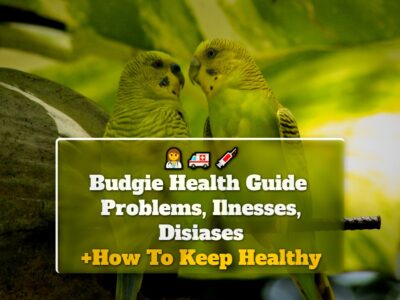When you want to buy a budgie, there are some features and conditions you can look for in a budgie to choose a healthy budgie.
You need to look at things such as whether the budgie is energetic and not injured or deformed in any part of the body.
The topics that you should pay attention to before and during the purchase of budgies can be listed as follows:
- The budgie must be energetic
- Check nostrils and beak condition
- Examine wings
- Check the tail of the budgie
- Examine legs and feet
- Check out the vent (cloaca) condition
- Monitor the breathing of the budgie
- Examine the budgie’s body for any infections, mites, fungal or similar diseases
- Pay attention to all body parts of the budgie
- Examine the budgie’s body for any infections, fungal or similar diseases.
Doing a little research before buying a budgie for some diseases and conditions will help you pick a more healthy and active budgie.
For example, it will be useful to see how fungi and similar infections appear in the budgie’s body. You can get preliminary information by examining how budgie with fungal and similar diseases looks in the photos.
No matter how well-intentioned the seller from whom you bought your budgie is, there may be details that even he or she cannot notice.
Not every budgie seller has enough information about birds. For this reason, it will be useful to know and research the details you need to look at before you go to the place where you will buy a budgie when choosing a healthy budgie.
The Budgie Must Be Energetic
Budgies are extremely active birds in nature. They quickly do the movements they do outside of sleep and rest times.
They have fairly rapid body movements when eating or having physical contact with other budgies. Unhealthy budgies make such movements as little and slow as possible.
It will be better if you try to pick a budgie during the daytime when budgies are usually active. In this way, you can easily detect budgies that should be active but are not.
Check Beak and Nostrils Condition
When we want to buy a healthy budgie, one of the first places we should look at the bird’s body is the beak. The nostrils of a healthy budgie are clean, and the beak is as long as it should be.
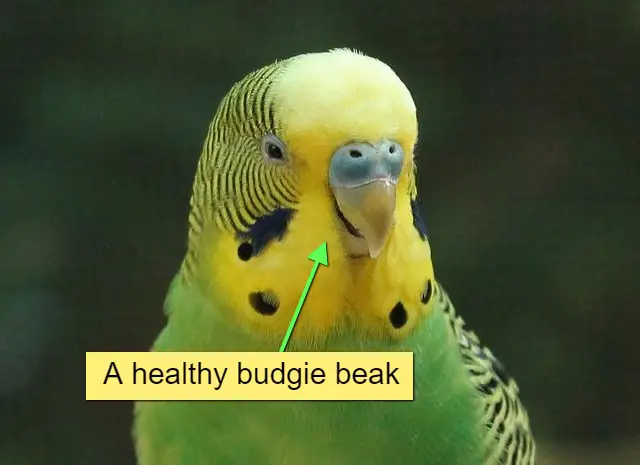
Sometimes, budgies’ beaks can be longer than they should be due to various diseases such as liver diseases, nutritional imbalances, and trauma.
In such cases, you can assume that this budgie has an overgrown beak due to any illness.
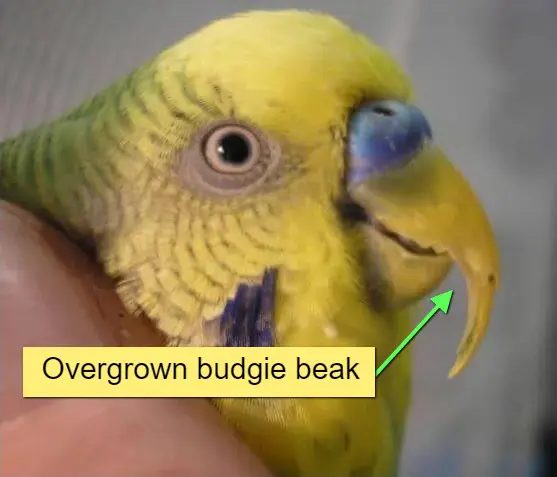
There is one more thing to keep in mind when choosing a healthy budgie: female budgies’ ceres turn tan and brown tones and have a crusty surface during the breeding season. This does not mean that they are sick.
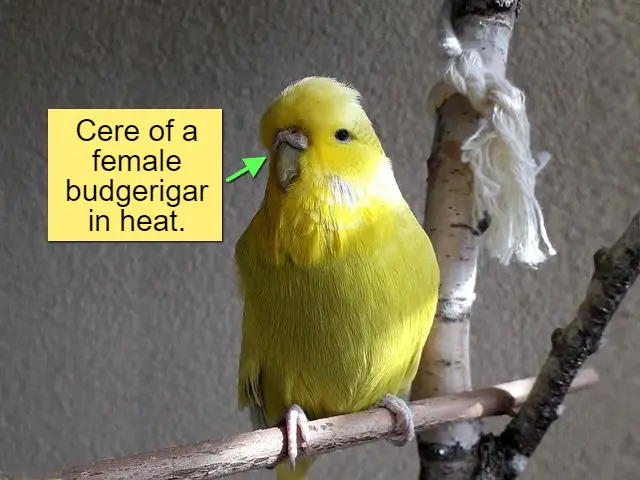
Examine Wings
Healthy budgies must also have healthy wings. Budgies spend most of their day flying from place to place. Therefore, their wings are extremely important to them.
If a budgie is unable to fly for any reason, it will become stressed over time. Stress can cause many diseases in budgies.
Try to make sure that the adult budgie you decide to buy can fly comfortably from one point to another. However, you may not have such an opportunity for baby budgies that cannot fly yet.
You should keep in mind that some budgie owners and sellers trim their budgies’ primary wing feathers for a variety of reasons. However, this does not mean that the budgie is unhealthy.
Check the Tail of the Budgie
The tail of a healthy budgie should be long enough to easily change direction while flying. Changing direction while flying is critical for budgies.
The budgie’s tail feathers should have vibrant colors and should not show signs of fungus and similar diseases.
According to WBO (World Budgerigar Organization), the distance between the wing tip and the tail tip of a standing budgie should be 35% of the budgerigar’s body length. However, the fact that the budgie’s tail is longer or shorter than this does not mean that it is unhealthy.
Examine Legs and Feet
The legs and feet are among the organs that you should definitely look at.
The first thing you should pay attention to is whether there are any signs of infection, fungus, and similar disease in the legs and feet of the budgie.
Additionally, make sure that the toenails are not longer than they should be.
Check Out the Vent (Cloaca) Condition
The vent (cloaca) area of healthy budgies is usually clean. Besides, there are no dirt residues on the feathers at the edge of the vent area too.
Due to various diseases and conditions such as diarrhea and abdominal problems, the vent area of budgies begins to get dirty.
You can also try to determine if the budgie is sick by checking the vent area.
Monitor the Breathing of the Budgie
Budgerigars have respiratory systems that work differently than humans. They can take oxygen into their bodies both while breathing in and out. It is natural for a healthy budgerigar to be short of breath after a flight or a high-impact movement.
However, budgies with some health issues may appear panting even if they don’t move at all. These birds are often the ones experiencing difficulties, such as upper and lower respiratory tract and fungal infections.
Examine the Budgie’s Body for Any Infections, Mites, Fungal or Similar Diseases
When purchasing a budgie, make sure that there are no traces of any infection in the bird’s body.
Even if you do not see any signs of infection in the body of the budgerigar you decide to buy, if there are other birds in the cage, check their bodies for signs of infection. Since infections are contagious, your bird may also have these infections.
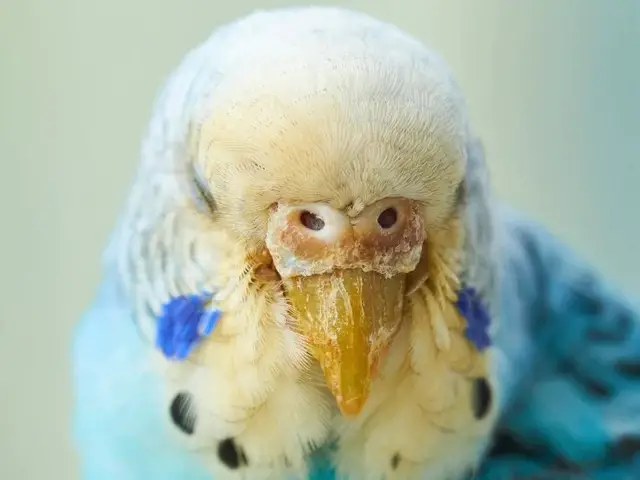
If you see any signs of infection, please report this to the seller.
Pay Attention to All Body Parts of the Budgie
Before you go to buy budgies, try to understand what healthy budgies look like in general. To do this, you can watch budgie videos.
You can also look at budgie photos, but watching budgie videos will be useful for you to understand how a lively and active budgie moves.
Which Type of Budgie is Healthiest
Budgie are generally small-sized birds. Budgies can be divided into large-sized and small-sized budgies themselves. Small-sized budgies include wild and American budgies, while large-sized budgies include English budgies and show budgies.
Large-sized budgies are more likely to get diseases caused by inactivity such as tumors, as they have been produced by selective breeding since the early 1980s.
Whether large or small, budgies can live trouble-free life thanks to proper nutrition and good care.
What Does an Unhealthy Budgie Look Like?
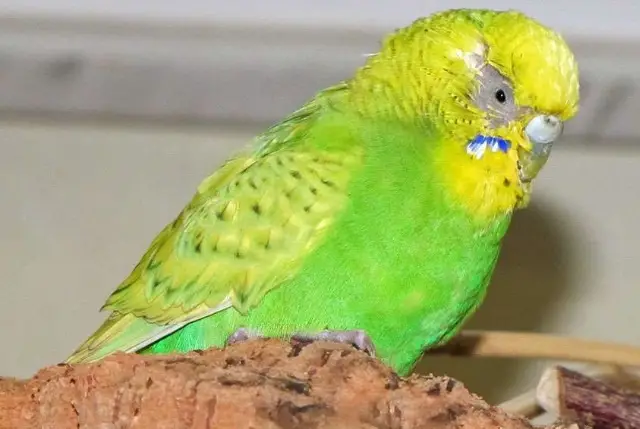
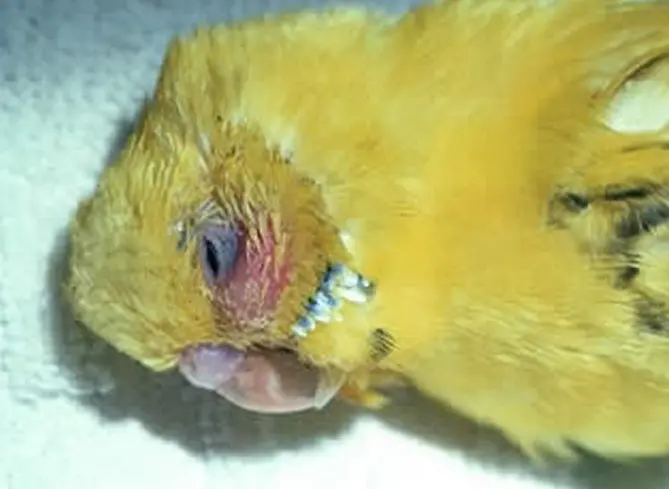
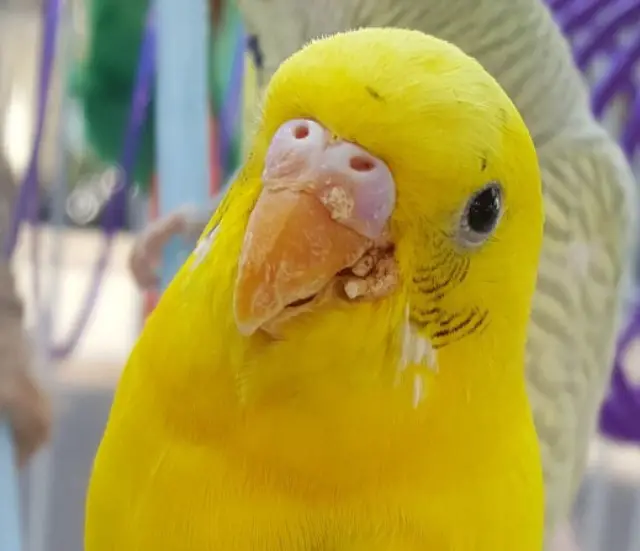
REFERENCES
